Columbines bring vibrant colors to your garden. They can pretty much grow by themselves and do not demand a lot of attention to maintain. But what makes them suddenly stop blooming? We have researched this question and found the answer to this mystery for you. Here is what we found out:
If your Columbine is not blooming, consider the time or season, the environment, and the pests that may be hindering your plant from blossoming. Another potential problem is that the plant's crown may be buried deeper than the required depth.
In this article, we'll take a closer look at each of these issues, why they may affect your columbines, and how to fix them. We'll also look at other potential problems your Columbine might face and how to grow them in pots or even indoors. Stay with us and keep on reading if you want to learn about all of this and more.
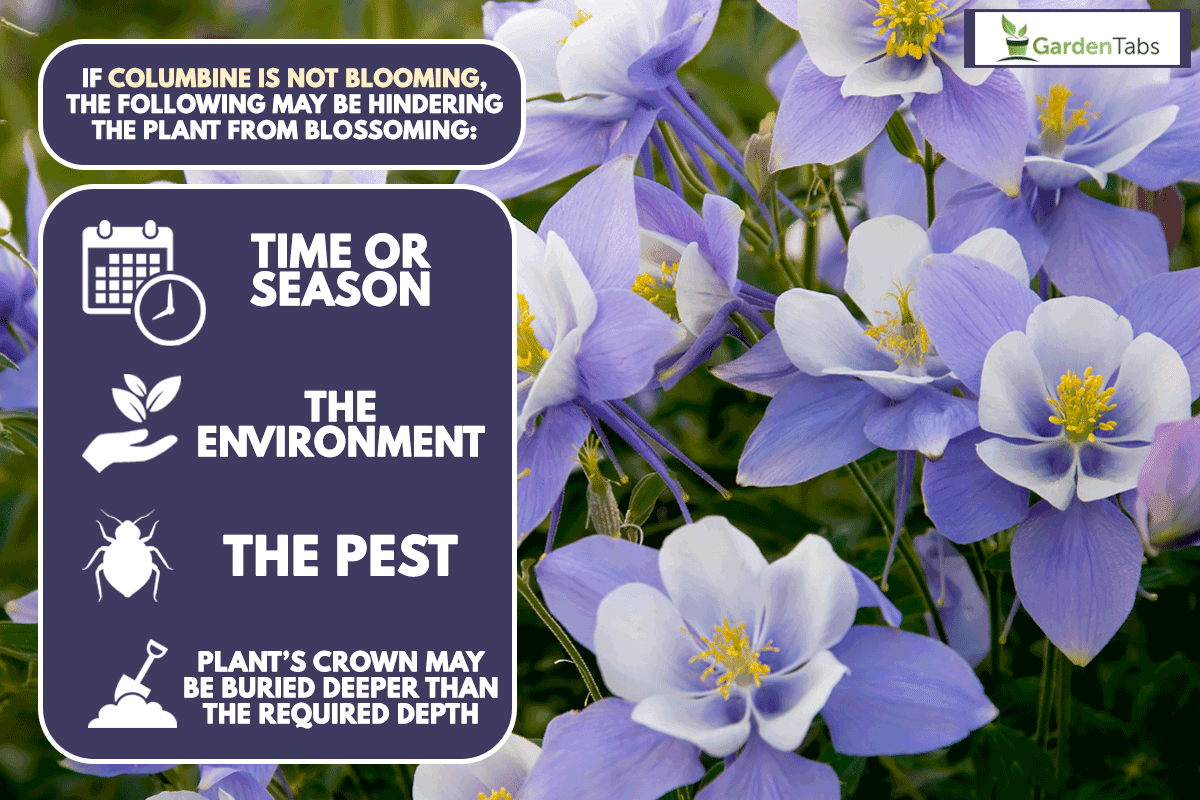
Reasons Why Your Columbine Is Not Blooming
Flowers welcome you with their bright and varied colors after the cold white winter. They signify the end of one season and the start of another. Columbine flowers are among those that add to the beautiful tapestry of spring.
Before we proceed to the main agenda, let us first give you information about Columbines that you may not know yet. You can get numerous benefits from Columbine besides just a color contributor in your space.
First, they can lessen irritation and redness in areas of your skin. Another is that it can help treat mild acne and plant-derived rashes such as poison ivy or oak. However, do not use Columbine on open wounds as they contain cardiogenic toxins which are harmful to humans.
Columbine is also effective for medicinal purposes. In fact, according to the US Department of Agriculture, the parts of western Columbine are used by the Native Americans to treat stomach aches, sore throat, cough, and cold. Also, they boil it to prevent hair lice from occurring.
Columbine plants are also used as perfumes or clothing fragrances. However, you should be aware that they are toxic to humans as well as animals. Therefore, you must consult an herbalist or professional in this field before intaking, applying, or using Columbine as a remedy.
Despite the benefits, there may be instances that your Columbine stays bushy and is not blossoming. Check out these probable causes as to why your Columbine is not blooming this year.
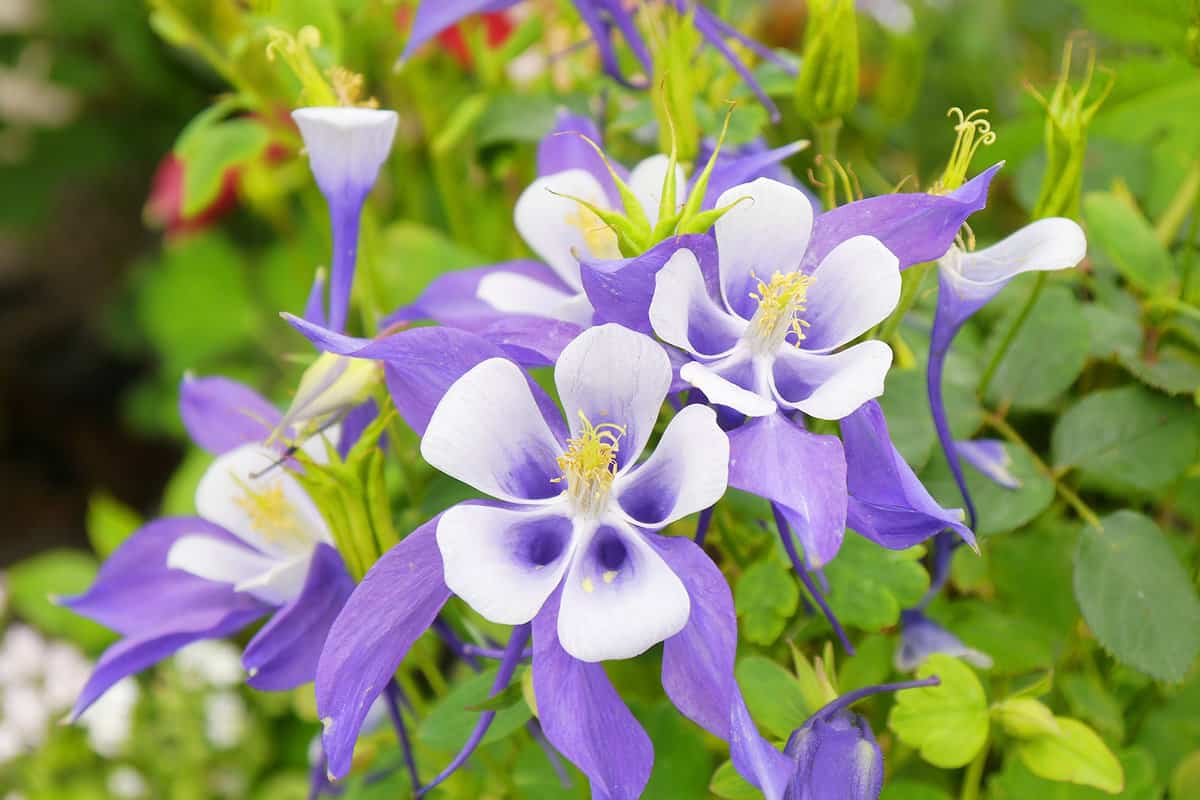
It Is Not Time For It To Bloom Yet
There are two possible reasons regarding the time that you should know. First, after the winter, Columbines will take a few weeks of work for it to blossom. That is why expect them to start blooming around late spring and throughout the summer when they collect nutrients for the incoming winter.
This is also the reason why most flowers bloom in spring. This is due to the temperature and their exposure to sunlight is longer. These two factors contribute a lot to their growth.
Also, Columbines naturally start to blossom once they are at least 2 years of age. The first year is for growing out their roots and the next is for the flowers. So, if your plant is a year young only, do not expect it yet to bloom.
The Soil's Condition Is Not Compatible With The Plant
If the soil where the Columbine's planted is compacted and always wet, then flowers won't probably show themselves any time sooner. Columbines thrive in loamy soil (a mixture of sand, silt, and clay) which can hold moisture and drains well.
Loam soils have the following ratio:
- Sand - 23 to 52%
- Silt - 28 to 50%
- Clay - 7 to 27%
To check, the texture should be moldable but not sticky. If yours isn't like this, then you should start turning your soil into a loamy for better growth of your Columbine.
Want to know the best loam compost for your garden? Check this out: 11 Best Loam-Based Compost Mixes
There Is Too Much Nitrogen In Your Fertilizer
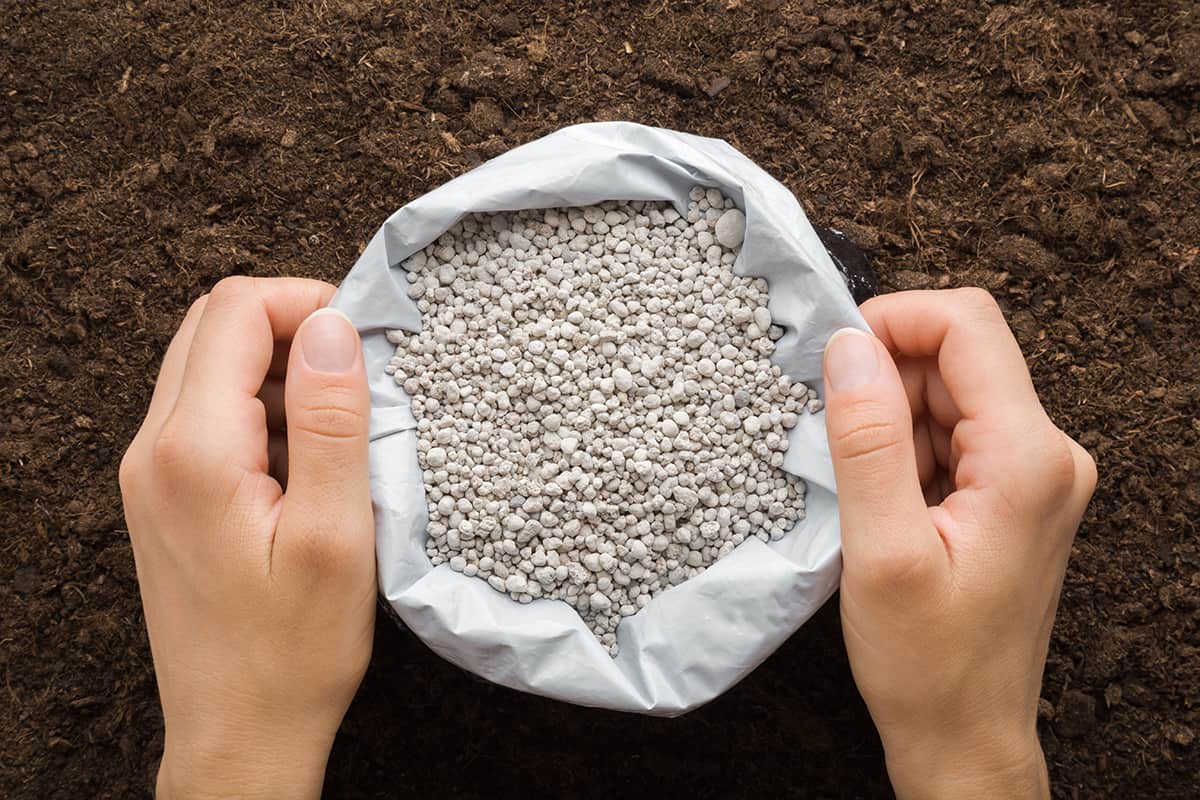
Too much nitrogen deters flower growth. They are playing the role of making your leaves bigger. That way, your plant can have more room to store sunlight. However, the energy that is supposedly for flower-blooming use is being snatched for chlorophyll production.
Also, since they are rich in greens, they attract more bugs/insects or diseases. Make sure you use the right amount of fertilizer (which usually has a 10-10-10 or 5-10-10 NPK ratio).
Sunlight Deficiency
If your Columbine is situated in a spot where it does not get enough sunlight, it won't have the energy and food to store for the seasons before its next blooming time. This may be the reason why it was not able to bloom this year.
To prepare for the next spring, put them in a place where they can get enough light. Whether under a semi or full-shade area.
Bugs Are Left To Destroy The Plant
As we have mentioned, the leaves can attract bugs or insects that may destroy your Columbine. Here are some and how to get rid of them:
- Columbine sawfly - These bugs feed on your Columbine's leaves. To prevent them from doing so, remove the larvae that are present in the plant before they hatch. You can also use a Bacillus Thuringiensis, a caterpillar killer which you can apply to your Columbine.
Check out this Bacillus Thuringiensis on Amazon.
- Stalk borer - These damage your plant from the stem, causing them to wit. Always clean your Columbine's surroundings and get rid of the weeds.
- Columbine aphids - aphids get the leave's juices. Spray either horticultural oil or insecticidal soap repeatedly until they are eliminated.
Check out this horticultural oil on Amazon.
Planted Deeply
Did you plant your Columbine too deep? If yes, then make sure the crown (the spot where the stem and the roots meet) is soil-level.
Want to learn more about Columbine? Read this article: When To Transplant Columbine? [And How To!]
Common Problems Of Columbine
Aside from them not blooming, here are some of the other problems you may encounter with Columbine:
- Yellowing leaves because of too much moisture.
- Whitening leaves due to fungus infection.
- Falling leaves because of slugs.
Will Columbine Re-bloom If Cut Back?
Yes. Cutting or pruning your Columbine can renew the plant's foliage growth. By doing so annually, you can expect a good bloom until the end of its 3 to 5 life expectancy. Cut the old parts once a new one emerges during its growing season.
Here is a more way how to prune your Columbine.
- First, clean the tools you will use.
- Pinch off the old flowers.
- Cut half of the plant's height to let new leaves grow.
- Remove the dead leaves by cutting the leaf stalks that are present near the ground.
Can columbines grow in pots?
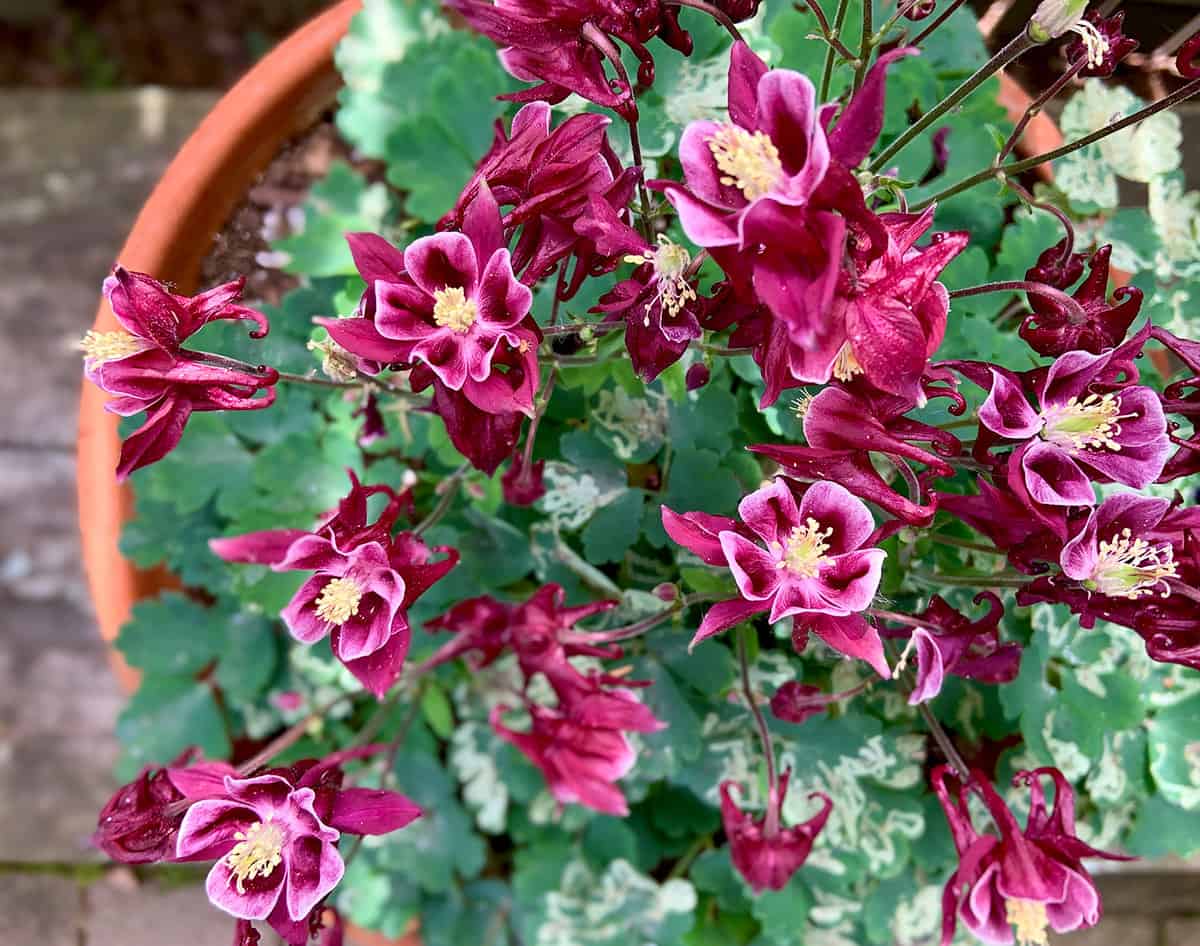
Yes, Columbines can also grow in pots. However, there are a few points to consider when doing so:
- Make sure you have protection in your window if you're going to put them there. Its flowers can attract birds and bees.
- Choose a shallow pot. As discussed above, they do not like being buried deep in the soil.
- Soil moisture should be between 65 to 70 Fahrenheit.
- Let it bathe under the sun for at least 6 hours.
- Do not use too much fertilizer.
- Do not overwater the plant. They prefer dry soil.
If you want a variety of flowers inside your home, refer to this article to know what else you can get: 17 Indoor Winter Plants That Bloom With Gorgeous Flowers
Can Columbine Be An Indoor Plant?
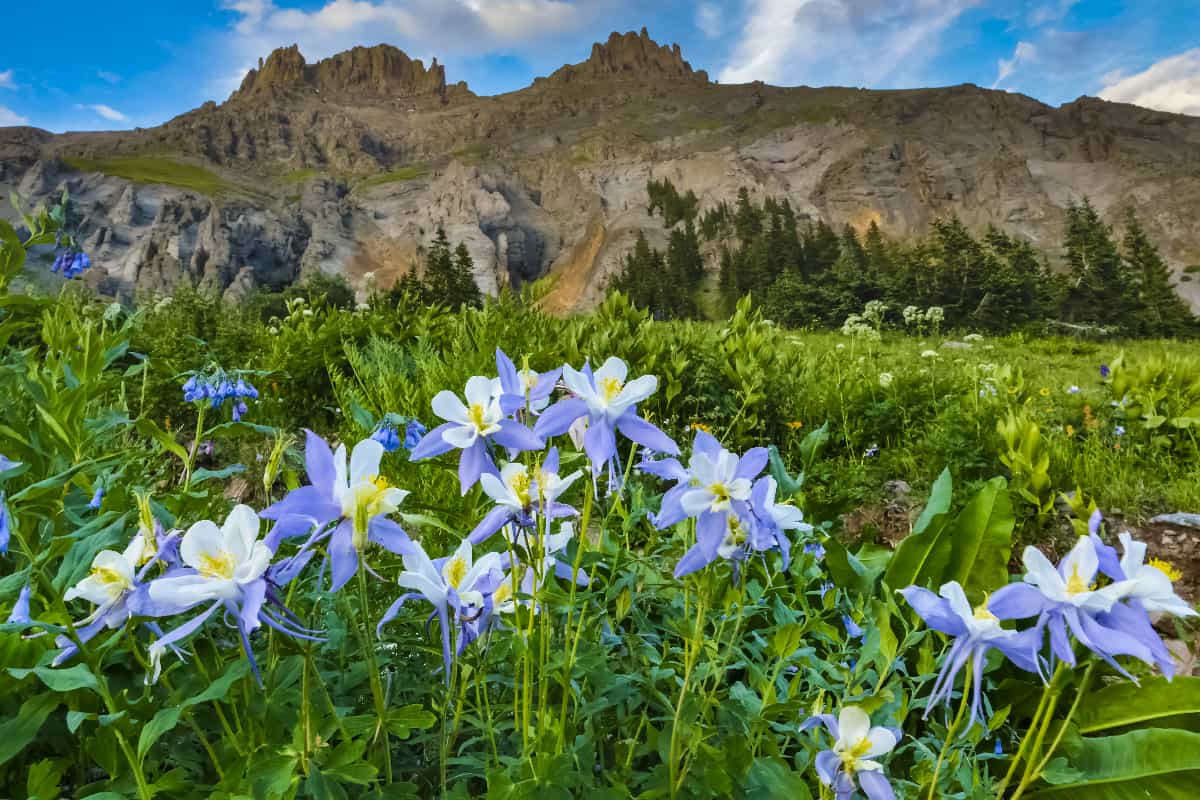
Yes, Columbines can be situated indoors. However, do not expect them to live long. They aren't typically displayed there but if you want to, make sure that it gets enough sunlight by placing them in the window. Another alternative is the use of grow light.
Grow lights are used to imitate and provide the sunlight needs of your plants indoors. Which mean, you can get its benefits even at night or during the storm.
Aside from that, make sure to fertilize and do cutting regularly.
Check out this EZORKA's grow light on Amazon.
Conclusion
If your Columbine is not blooming, it might be because it is not yet late spring or is younger than 2 years old, it may be planted in compacted soil, fertilized with too much nitrogen, or has pests destroying the plant, or the crown is not buried at soil-level.
Aside from that, there are other problems you should be aware of regarding Columbine. Its leaves may turn yellow, white, or fall due to infestations or infection. Make sure to always maintain its surroundings to prevent them from occurring.
Now you know more about all of these problems and how to address them. Soon your all Columbine conundrums will melt away with winter's frost.
If you found this article helpful, be sure to check out these great posts:



